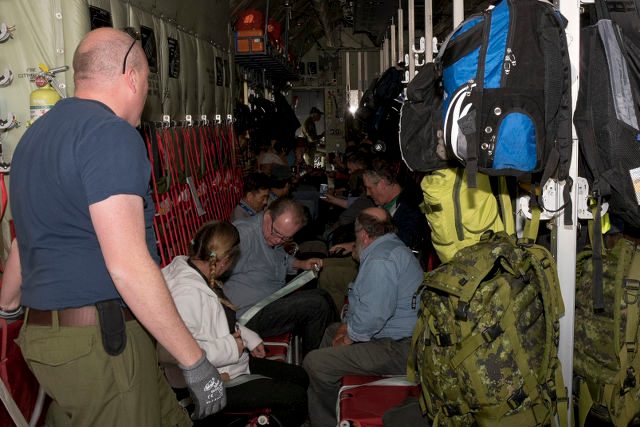SUMMARY
This is AI generated summarization, which may have errors. For context, always refer to the full article.

FORT MCMURRAY, Canada (UPDATED) – Wildfires that ravaged a vast area of western Canada’s Alberta province now are threatening a neighboring region, authorities said Sunday, May 8, as the inferno – which doubled in sized in the space of a day – continued its advance.
The ruthless blaze, fanned by high winds and fueled by tinder-dry conditions, devastated the region around the city of Fort McMurray, and could now spread to neighboring Saskatchewan province some 35 miles (60 kilometers) away.
Chad Morrisson, senior wildfire manager for Alberta, said unless the region receives at least 4 inches (10 centimeters) of rain, “we expect to be out fighting the fire in the forested area for months to come.”
He said: “That’s not uncommon with such large wildfires,” adding that the blaze was moving toward Saskatchewan.
Even as fellow Canadians rally to provide them succor and support, thousands of evacuees who fled the fire are coming to grips with the likelihood that they will be unable to see their homes anytime soon – assuming the dwellings are still standing at all.
Hundreds of firefighters, exhausted and demoralized after days vainly battling a blaze they grimly refer to as “the beast,” acknowledged that they will probably have to wait for the fire to burn itself out.
Weather forecasters, meanwhile, predict no rain for at least a week in the area, whose oil sands are a vital part of the regional economy.
With 2,000 square kilometers of forests and brush, as well as whole neighborhoods of the city, turned to ash – an area three-quarters the size of Luxembourg – firefighters battling the blaze are concentrating on saving vital infrastructure, including telecommunications, electric grids, gas, and water lines.
Rescue crews and police have been guarding the city, but it will be days before workers can begin clearing damaged or destroyed structures and before some residents can begin to move back into those areas spared by the inferno.
Alberta Premier Rachel Notley said late Saturday that gas lines had been cut, the electric grid damaged, and a large part of the city had neither electricity nor drinkable water.
“There’s a great deal of hazardous material to be cleaned up, and many other things to be done before the city is safe for families to go home,” she said.
Most of the 100,000 evacuees have found temporary shelter with friends or family members, but the government is working furiously to provide accommodations for the others.
Many of the employees of the big petroleum companies active in the area come from other parts of Canada and have returned home. (READ: Fort McMurray foreign workers may have to leave Canada)
But tens of thousands of other evacuees are scattered across Alberta in emergency shelters, campgrounds, or even in their cars parked for miles along provincial roads. Many need food, clothing, or personal products like diapers.
‘We’re here, we’re safe’
In Lac La Biche, the first big town south of the forbidden zone, cases of mineral water, clothes, and food provided by the Red Cross or donated by fellow Canadians are being distributed by volunteers.
“This is just amazing. It’s just amazing to see what’s been done. We’re overwhelmed, everybody’s overwhelmed with how much the whole country has supported us,” said Sarah, who evacuated with her family without knowing where they would end up.
“I’ve said to my daughter the whole way up here, the most important thing is that we’re here, we’re safe, and everything else is just stuff,” she told AFP.
By late Saturday, nearly all 25,000 people who were still trapped to the north finally had left town, either via airlift or convoys on the roads.
Paula, a volunteer and coordinator of the center, said the people who fled Fort McMurray, putting aside their own distress, have joined in helping distribute aid to newer arrivals.
Most of them, she said, were evacuated after being trapped in oil-company work camps north of Fort McMurray.
Over the last two days, they had reached safety only after crossing the city under police escort, driving through thick clouds of noxious smoke, and passing hundreds of homes still burning or already reduced to ashes along the city’s western edge.
Notley said large numbers of evacuees could be housed for now in university dormitories in Edmonton or Calgary – students left them days ago when their spring term ended.
With low humidity, high temperatures, and gusty winds, fire conditions remained extreme.
Still, in a glimmer of positive news, the authorities have recorded no fatalities directly linked to the blaze, and winds were pushing the fires away from Fort McMurray.
Across the province, more than 1,400 firefighters, about 133 helicopters, 200 pieces of heavy equipment and more than 27 air tankers are battling 43 separate blazes. – Michel Comte, AFP/Rappler.com
Add a comment
How does this make you feel?
There are no comments yet. Add your comment to start the conversation.